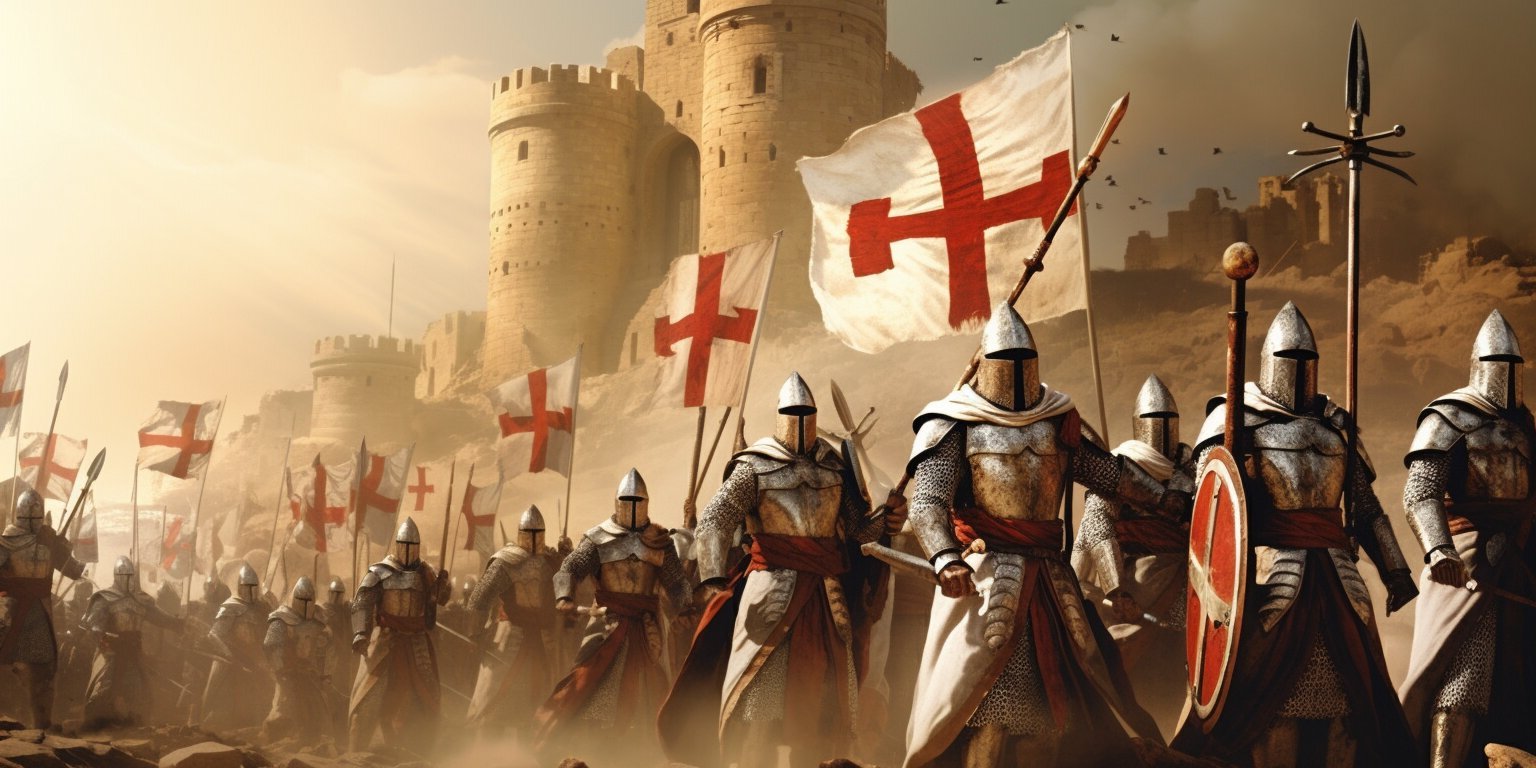
Who were the Knights Templar? They were a medieval Christian military order founded in 1119. Known for their distinctive white mantles adorned with a red cross, they played a crucial role during the Crusades. Their primary mission was to protect pilgrims traveling to the Holy Land. Over time, they amassed significant wealth and influence, establishing a network of fortifications and financial institutions across Europe. Despite their power, the order faced persecution, leading to their dramatic downfall in the early 14th century. Curious about their secrets, legends, and lasting impact? Let's dive into 30 intriguing facts about the Knights Templar!
Origins of the Knights Templar
The Knights Templar, a medieval Christian military order, has fascinated historians and enthusiasts alike. Their origins, shrouded in mystery, have given rise to numerous legends.
- Founded in 1119: The order was established by nine knights in Jerusalem to protect Christian pilgrims traveling to the Holy Land.
- Named after Solomon's Temple: They were called "Templars" because their headquarters were located on the Temple Mount, believed to be the site of Solomon's Temple.
- Officially endorsed by the Church: In 1129, the Templars received official recognition and endorsement from the Catholic Church at the Council of Troyes.
Structure and Hierarchy
The Templars had a unique organizational structure that set them apart from other medieval orders. Their hierarchy was both strict and efficient.
- Grand Master: The highest-ranking official, elected for life, who oversaw the entire order.
- Three main ranks: Knights, sergeants, and chaplains formed the core of the Templar hierarchy.
- International presence: They established commanderies across Europe and the Middle East, making them one of the first truly international organizations.
Military Might
The Templars were renowned for their military prowess. They played a crucial role in several key battles during the Crusades.
- Battle of Montgisard: In 1177, they helped defeat a much larger Muslim army led by Saladin.
- Fortress builders: They constructed formidable castles, such as Krak des Chevaliers and Château Pèlerin, to secure strategic locations.
- Elite fighting force: Templar knights were heavily armored and highly trained, making them one of the most feared military units of their time.
Financial Power
Beyond their military achievements, the Templars were also financial innovators. They developed systems that laid the groundwork for modern banking.
- Early banking system: Pilgrims could deposit money in one Templar commandery and withdraw it in another, reducing the risk of theft.
- Wealth accumulation: Through donations, land grants, and successful ventures, they amassed significant wealth.
- Loan providers: They lent money to monarchs and nobles, often securing their loans with valuable assets.
Religious and Cultural Influence
The Templars were deeply religious and had a significant impact on medieval culture and society.
- Monastic vows: Members took vows of poverty, chastity, and obedience, similar to monks.
- Distinctive attire: They wore white mantles with a red cross, symbolizing their commitment to Christ.
- Architectural contributions: They funded and built numerous churches and cathedrals across Europe.
Legends and Mysteries
The Templars' sudden downfall and the secrecy surrounding their activities have fueled countless legends and conspiracy theories.
- Friday the 13th: Their mass arrest on October 13, 1307, is believed to be the origin of the superstition surrounding this date.
- Holy Grail: Some legends claim they discovered and protected the Holy Grail.
- Lost treasure: Myths suggest they hid vast treasures that remain undiscovered to this day.
Downfall and Legacy
The Templars' dramatic fall from grace and their enduring legacy continue to captivate imaginations.
- Accusations of heresy: King Philip IV of France accused them of heresy, leading to their arrest and trial.
- Dissolution by the Pope: In 1312, Pope Clement V officially disbanded the order.
- Last Grand Master: Jacques de Molay, the final Grand Master, was burned at the stake in 1314.
Modern Connections
Despite their medieval origins, the Templars have left a lasting impact on modern culture and organizations.
- Freemasonry: Some believe the Freemasons are linked to the Templars, though this remains speculative.
- Popular culture: They feature prominently in books, movies, and video games, such as "The Da Vinci Code" and "Assassin's Creed."
- Charitable organizations: Modern groups, like the Sovereign Military Order of the Temple of Jerusalem, claim to continue the Templars' charitable mission.
Symbolism and Artifacts
The symbols and artifacts associated with the Templars carry deep meanings and have become iconic.
- Red cross: Their emblem, a red cross on a white background, symbolizes martyrdom and purity.
- Seal of the Templars: Depicts two knights on a single horse, representing poverty and brotherhood.
- Templar relics: Items like swords, armor, and manuscripts are highly sought after by collectors and historians.
Influence on Modern Organizations
The Templars' organizational principles and practices have influenced various modern institutions.
- Military orders: Their structure inspired later military orders, such as the Knights Hospitaller.
- Banking practices: Their financial innovations laid the groundwork for modern banking systems.
- Philanthropy: Their charitable activities set a precedent for modern philanthropic organizations.
The Legacy of the Knights Templar
The Knights Templar left a lasting mark on history. Their military prowess, financial acumen, and mysterious rituals continue to fascinate. From their role in the Crusades to their influence on modern banking, these knights were more than just warriors. They were pioneers in many fields. Despite their dramatic fall, their legacy lives on in popular culture and historical studies. Their story reminds us of the complex interplay between faith, power, and mystery. Whether seen as heroes or villains, the Knights Templar remain a symbol of a bygone era filled with intrigue and adventure. Their impact on history and myth ensures they won't be forgotten anytime soon. So next time you hear about the Templars, remember there's more to their story than meets the eye.
Was this page helpful?
Our commitment to delivering trustworthy and engaging content is at the heart of what we do. Each fact on our site is contributed by real users like you, bringing a wealth of diverse insights and information. To ensure the highest standards of accuracy and reliability, our dedicated editors meticulously review each submission. This process guarantees that the facts we share are not only fascinating but also credible. Trust in our commitment to quality and authenticity as you explore and learn with us.


